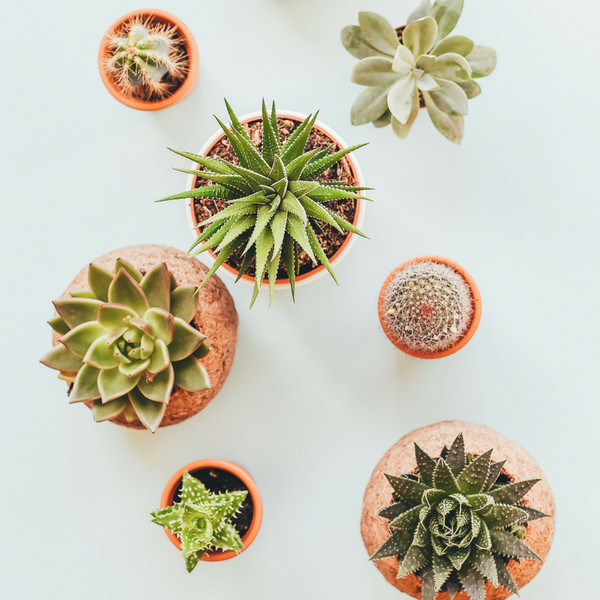Bringing the outdoors in with houseplants can brighten your home and boost your mood. But if you’re a cat owner, you know the constant worry: “Is this plant safe for my furry friend?” When it comes to bamboo, you might be wondering, Is Bamboo Toxic To Cats? The good news is, generally, bamboo is not considered toxic to cats, making it a potentially safe and stylish addition to your indoor jungle. However, like with any plant, there are nuances to consider to ensure your cat’s safety and wellbeing.
Understanding Bamboo and Cat Safety
Bamboo’s graceful stalks and lush green leaves can add an elegant touch to any room. Many pet owners are drawn to bamboo for its aesthetic appeal and air-purifying qualities. But before you rush out to buy a bamboo plant, let’s delve deeper into why bamboo is generally considered safe for cats and what potential hazards, if any, you should be aware of.
Why Bamboo is Often Listed as Pet-Safe
Bamboo is classified as non-toxic to cats by the ASPCA (American Society for the Prevention of Cruelty to Animals). This is primarily because bamboo does not contain soluble calcium oxalates, or other toxic compounds that are poisonous to felines. Many plants that are toxic to cats, like lilies or oleander, contain substances that can cause severe reactions, ranging from vomiting and diarrhea to kidney failure and even death. Bamboo lacks these dangerous toxins, making it a far safer choice for households with curious cats.
Potential Concerns with Bamboo and Cats
While bamboo is non-toxic, “safe” doesn’t mean “risk-free.” Here are a few things to keep in mind regarding bamboo and cat safety:
- Choking Hazard: Cats are naturally curious and playful, and they might be tempted to chew on bamboo leaves or stalks. While non-toxic, ingesting larger pieces of bamboo can pose a choking hazard or cause gastrointestinal upset. The fibrous nature of bamboo can be difficult for cats to digest, potentially leading to vomiting, diarrhea, or even intestinal blockages in rare cases if large quantities are consumed.
- Pesticides and Chemicals: Bamboo purchased from nurseries or garden centers might have been treated with pesticides or fertilizers. These chemicals can be harmful to cats if ingested. It’s always a good practice to repot new plants and wash the leaves thoroughly to remove any residual chemicals before bringing them into your home, especially if you have pets.
- Sharp Leaves: Some varieties of bamboo have sharper leaf edges. While not poisonous, these edges could potentially cause minor mouth irritation or cuts if a cat chews aggressively on them.
Choosing Pet-Safe Bamboo Varieties
If you’re set on adding bamboo to your home, opting for certain varieties can further minimize any potential risks. The term “bamboo” actually encompasses a wide variety of plants, and some are more suitable for indoor environments and pet-friendly homes than others.
 bamboo palms pet safe plants, 10 Beautiful Indoor Plants That Are Pet Safe
bamboo palms pet safe plants, 10 Beautiful Indoor Plants That Are Pet Safe
Bamboo Palms (Chamaedorea seifrizii): Often recommended as a pet-safe option, bamboo palms aren’t true bamboo but mimic the look and feel. They are known for being air-purifying and are generally well-tolerated by cats. Their softer fronds are less likely to cause mouth irritation compared to some true bamboo varieties.
Areca Palms (Dypsis lutescens): Similar to bamboo palms, areca palms offer a tropical vibe and are also considered non-toxic to cats. They are feathery and graceful, adding height and visual interest to your space.
Dwarf Palm (Chamaedorea elegans): For smaller spaces, dwarf palms are an excellent choice. They are pet-safe and easy to care for, bringing a touch of greenery without overwhelming a room.
Important Note: While these palms are often called “bamboo palms” or “palm bamboo,” remember they are palms, not true bamboo. True bamboo belongs to the grass family (Poaceae). However, for the purpose of pet-safe indoor plants, these palms offer a similar aesthetic and are safe for cats.
Beyond Bamboo: Other Pet-Safe Indoor Plant Options
If you’re looking to diversify your indoor greenery beyond bamboo-like plants, there are many other beautiful and safe options for cat owners. Creating a pet-friendly plant haven is easier than you might think!
- Spider Plants (Chlorophytum comosum): These resilient plants are incredibly easy to grow and feature striking variegated leaves. They are non-toxic to cats and even help purify the air. Spider plants are also fun for cats as their dangling leaves can be tempting to bat at (though you might want to hang them out of reach to prevent over-enthusiastic play).
 bamboo palms pet safe plants, 10 Beautiful Indoor Plants That Are Pet Safe
bamboo palms pet safe plants, 10 Beautiful Indoor Plants That Are Pet Safe
-
Boston Ferns (Nephrolepis exaltata): These classic ferns bring a touch of vintage charm and are safe for cats. They prefer humid environments and indirect light, making them ideal for bathrooms or well-lit living rooms. Remember that not all ferns are pet-safe, so always double-check before bringing a new fern home.
-
Succulents (Various Varieties): Many succulents are also safe for cats, including Echeveria, Haworthia, and Burro’s Tail. Succulents are low-maintenance and come in a wide array of shapes and colors, adding unique textures to your plant collection. However, it’s crucial to verify the specific succulent variety as some, like Aloe Vera, are toxic to cats. The ASPCA’s toxic and non-toxic plant list is an invaluable resource for checking specific plant safety.
 succulents safe for pets, 10 Beautiful Indoor Plants That Are Pet Safe
succulents safe for pets, 10 Beautiful Indoor Plants That Are Pet Safe
- Christmas Cactus (Schlumbergera bridgesii): Unlike many cacti, the Christmas cactus is spineless and non-toxic to cats. It produces beautiful blooms around the holiday season, offering a festive pop of color during the winter months.
Tips for Harmonious Living: Cats, Bamboo, and Plants
Even with non-toxic plants like bamboo, creating a safe and harmonious environment for your cat and your plants is essential. Here are a few practical tips:
- Placement Matters: Place bamboo and other plants in locations that are less accessible to your cat. высокие shelves, hanging planters, or rooms your cat doesn’t frequent can help minimize plant-cat interactions.
- Provide Cat-Friendly Alternatives: Offer your cat enticing alternatives to your houseplants, such as cat grass (which is safe for cats to nibble on), catnip, or engaging toys. This can redirect their attention away from your beloved greenery.
- Bitter Apple Spray: If your cat is persistently interested in chewing on your plants, consider using a pet-safe bitter apple spray on the leaves. The unpleasant taste can deter them from nibbling.
- Monitor Your Cat’s Behavior: Keep an eye on your cat’s interactions with your bamboo or other plants. If you notice excessive chewing or any signs of gastrointestinal upset, even with non-toxic plants, it’s best to move the plants out of reach and consult with your veterinarian if you have concerns.
Conclusion: Bamboo Can Be a Safe and Stylish Choice
So, is bamboo toxic to cats? The answer is generally no. Bamboo, especially varieties like bamboo palms, is considered a non-toxic and aesthetically pleasing option for cat owners looking to add greenery to their homes. While the risk of toxicity is low, it’s still important to be mindful of potential choking hazards and ensure your plants are free from pesticides.
By choosing pet-safe bamboo varieties, along with other non-toxic plants like spider plants and Boston ferns, and implementing a few preventative measures, you can create a beautiful, plant-filled home that is safe and enjoyable for both you and your feline companion. And remember, for a truly healthy and happy cat, a balanced diet rich in all-natural proteins, like those offered by Wellness Pet Food, is just as crucial as a safe and enriching environment.

